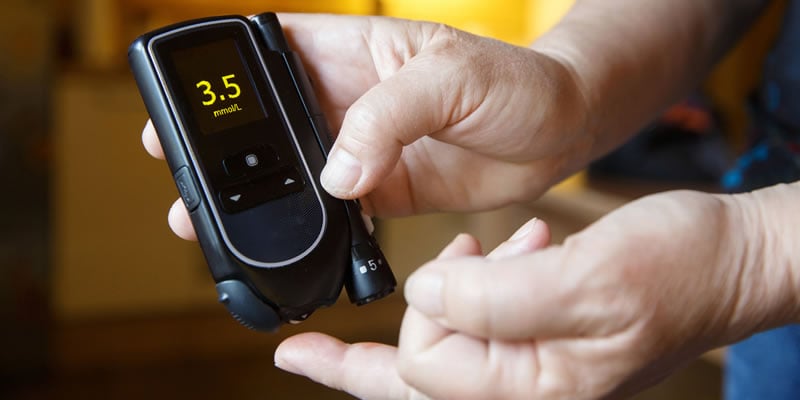Having high blood sugar levels can be discomforting and many people wish to know what they can do to help to bring down high blood glucose levels.
We look at some of the options for lowering blood glucose in the short term.
High blood sugar is commonly known as hyperglycemia.
What are the signs of high blood sugar?
The classic symptoms of high blood glucose levels are:
- Feeling very thirsty
- Needing to go the toilet often
- Having a dry mouth
- Feeling tired/lethargic
- Feeling uncomfortable and irritable
Check your blood sugar
If you take medication that may cause low blood sugar (hypoglycemia), it’s highly advisable to check your blood sugar levels before you try to bring your sugar levels down.
This is just in case your blood sugar is normal or low, which can be the case in some situations.
Testing of blood sugar before bringing your levels down is particularly important if you take insulin.
When to call for medical advice
It is important to note that very high blood glucose levels can be dangerous and it is important to be aware of the symptoms and risk factors of the following conditions:
- Diabetic ketoacidosis – a short term complication most commonly associated with type 1 diabetes
- Hyperosmolar Hyperglycaemic State – a short term complication most commonly associated with type 2 diabetes
If you are struggling to keep your blood glucose levels under control, speak to your GP or consultant who can advise you or refer you onto a diabetes education course.
Correcting high blood sugar levels with insulin
If you take insulin, one way to reduce blood sugar is to inject insulin.
However, be careful as insulin can take 4 hours or longer to be fully absorbed, so you need to make sure you take into account how much insulin you may already have in your body that is yet to be absorbed by the blood. Insulin that is yet to be absorbed by the blood is called ‘active insulin’.
If you decide to correct with insulin, watch you don’t over correct as this can lead to hypoglycemia and can be dangerous, particularly so before bed.
Walking
Exercise can help to lower blood sugar and walking is a good way of achieving this.
It might make sense that exercising harder would have a better effect on lowering blood sugar therefore but this is not always the case as strenuous exercise can produce a stress response which causes the body to raise blood glucose levels. This response does tend to vary from person.
Drinking more water
When your blood sugar levels are running high, your body will try to flush excess sugar out of your blood through the urine. As a result, your body will need more fluids to rehydrate itself. Drinking water can help the body with flushing out some of the glucose in the blood.
Just a word of caution to be sensible with drinking water; water intoxication (which can result in death) is possible if a number of litres water are drunk in a short space of time. This is rare and quite difficult to manage but it pays to be aware of this.
Reflect on the amount of sugar in your diet
Hyperglycemia occurs when there is too much glucose in the blood.
- Low-carb diet for 12 weeks put type 2 diabetes into remission
- Low carb in type 1 diabetes improves glucose level variability, new study shows
Therefore, one way of reducing your blood glucose levels is reflecting on where sugar may be consumed in the diet. Think about any refined and processed foods that may be in your diet as these are often high in sugar. This can be achieved through a low carbohydrate diet.



